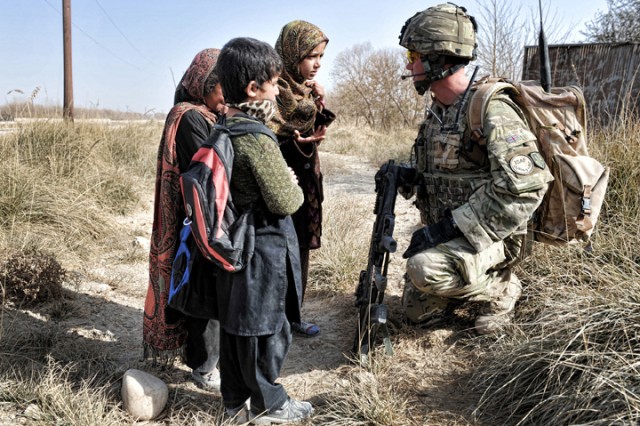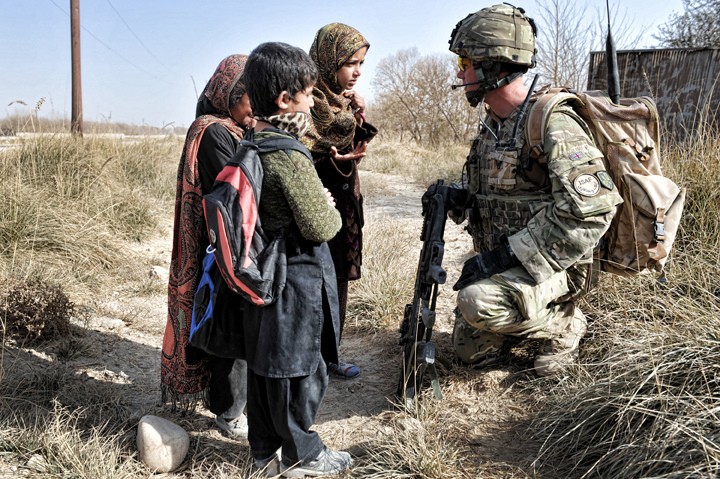KABUL, Afghanistan, Jan. 11, 2011 -- Operation Omid Panj, meaning "Hope Five," continues to provide positive effects for the Afghan people in Helmand Province.
The effects of the British-trained, Afghan National Army (ANA) offensive against insurgents were discussed Monday during a press conference at the International Security Assistance Force Headquarters here by German Army Brig. Gen. Josef Blotz, ISAF spokesman.
"Insurgents are leaving the area instead of facing the well-partnered Afghan and coalition forces. This has allowed the ANSF (Afghan National Security Forces) to show the residents of Ghazni that they are here to provide protection and security," said Blotz
Operation Omid Panj follows the successful blueprint of Operation Omid Char to provide an ANA-planned, ANA-conducted operation to demonstrate the growing capability of ANA to find and render safe improvised explosive devices (IEDs).
The operation is expected to continue through the month of January.
"By the time the operation concludes, Gereshk district will have a new patrol base between the river and Bandi Barq road, a rural area that was a target of insurgent intimidation due to its proximity to smuggling routes into Gereshk city," Blotz said.
ANA's 3rd Brigade of 215 Maiwand Corps devised the operation in response to a request from the Gereshk District Governor Abdual Ahad.
"The object of this operation is to bring security and maintain law and order in the district. The safety of the local civilians is our highest priority," said Afghan Brig. Gen. Sherin Shah, commander, ANA 3/215 Brigade, before the operation began Dec. 27, the same day that Afghan and coalition forces uncovered a weapons cache in a small village in Ghazi province.
"During the operation, soldiers discovered more than 20 mortar rounds and many more artillery rounds of different types and calibers. The cache was later destroyed by coalition forces," said Blotz.
In the same district, Blotz also summarized the success of the Polish Task Force White Eagle since October.
"White Eagle has seized more than 12 tons of explosive material and more than 175 kilograms of illegal drugs in the province," he said.
And, as part of the continued commitment to the success of the Afghan National Security Forces, U.S. Defense Secretary Robert Gates authorized the deployment of 1,400 additional U.S. Marines to southwest Afghanistan to assist with providing security to the Afghan people, said Blotz.
Deployment of the additional troops was in anticipation of an insurgent offensive in spring.
With clearing operations, additional troops, and Afghan operations leading the way, additional efforts are being made to end the fighting through the Afghan Peace and Reintegration Program.
"Taliban fighters are demonstrating they are tired of killing their fellow Afghans and are expressing confidence in the peace process. They are coming forward in a few provinces to renounce violence and return home with honor and dignity," Blotz said.
After clearing, coalition forces moved into hold and then build phases, enabling much-needed infrastructure to be constructed to support the peace process. One of the recent projects was the new solar-powered street lights in Kabul city.
"The project was originally thought of by Kabul Mayor Mahammad Yunus Nawandish, who worked with the Kabul City Working Group to make it a reality," said Blotz.
At the lighting ceremony Dec. 29, Kabul Deputy Mayor Abdul Ahad Wahid commented on the impact the new lights would have on the city and people.
"The shops can be open for four or five more hours. The people can come and they can buy more. It will enhance their lives because the more you sell, the more you spend," said Wahid. "I know that this will have a positive impact. The moment we started lighting the road, people were extremely happy. There were like 'wow we are living in a real city.'"
"Funded by the Afghanistan Engineering District-North's Commander's Emergency Response Program, the 28 poles are a start for the Mayor's vision for lighting up the entire city at night," said Blotz.
Looking toward the future, Blotz commented on the success of current operations and programs and how they will affect the 2014 drawdown of forces.
"ISAF will thin out its forces responsibly and reinvest them in places where more assistance is required for the Afghan forces. Even as coalition forces transition and troop reductions begin, NATO remains committed to a long-term partnership with the Afghan people beyond 2014. As Afghans stand up and take the lead they will not be standing alone."


Social Sharing